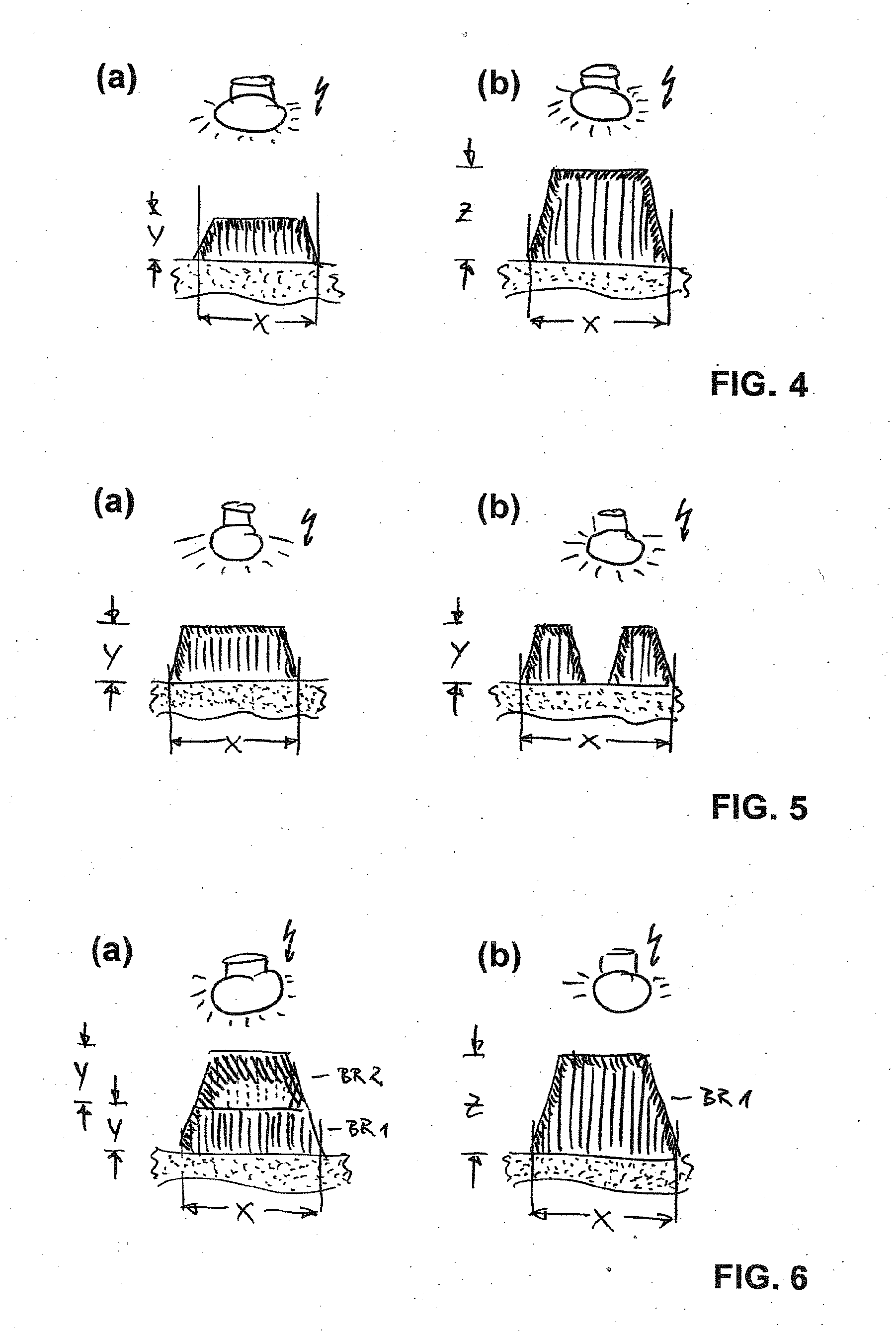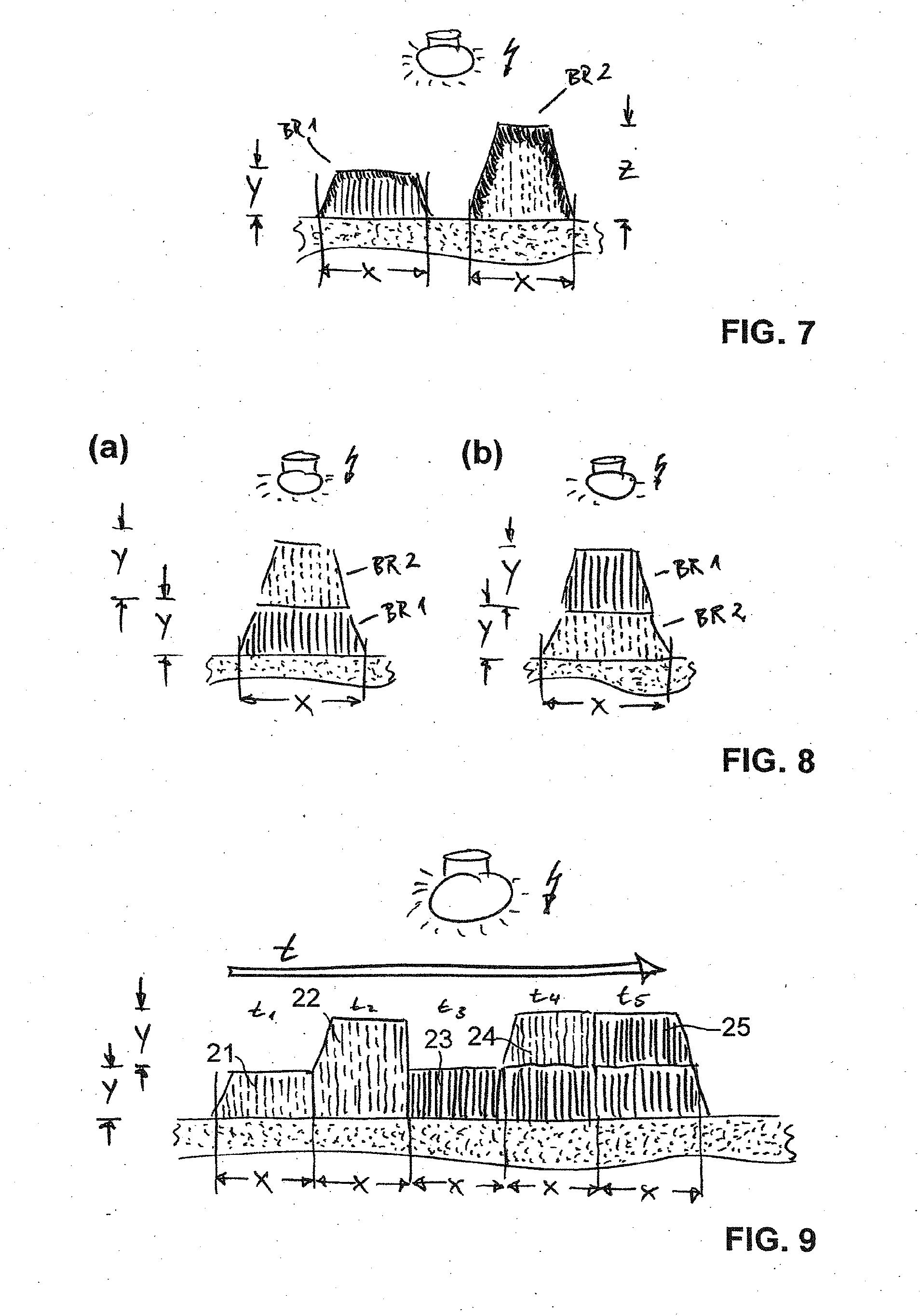Adjustment of the properties of a retinal protein in a photochromic product
a technology of photochromic products and proteins, applied in the field of color applications, can solve the problems of thermal and photochemical degradation of many synthetic photochromic materials, and achieve the effects of good edge definition, variable coating thickness, and large spatial variation of time dependence on the resulting printed produ
- Summary
- Abstract
- Description
- Claims
- Application Information
AI Technical Summary
Benefits of technology
Problems solved by technology
Method used
Image
Examples
Embodiment Construction
[0063]Intaglio Printing
[0064]In intaglio printing, a printing plate, often a printing cylinder, which is provided with linear depressions (“gravures”) is used. The printing ink has a relatively high viscosity in comparison to other printing processes. It is firstly applied over the whole area of the printing plate and then wiped off in the regions outside the gravures. The gravures can be mechanically created, but are as a rule produced photochemically or as laser gravure. Typical gravure depths lie in the region 2-150 micrometers, typical gravure widths of the order of magnitude of the gravure depth. The printing plate is pressed onto the substrate under high pressure (typically 5 to 100 metric tons) and often at elevated temperature (typically up to 80° C.). The substrate can be paper, but other types of substrates such as for example plastic films can also be used.
[0065]Intaglio printing as a gravure printing process based on linear gravures has long been known from the prior art...
PUM
 Login to View More
Login to View More Abstract
Description
Claims
Application Information
 Login to View More
Login to View More - R&D
- Intellectual Property
- Life Sciences
- Materials
- Tech Scout
- Unparalleled Data Quality
- Higher Quality Content
- 60% Fewer Hallucinations
Browse by: Latest US Patents, China's latest patents, Technical Efficacy Thesaurus, Application Domain, Technology Topic, Popular Technical Reports.
© 2025 PatSnap. All rights reserved.Legal|Privacy policy|Modern Slavery Act Transparency Statement|Sitemap|About US| Contact US: help@patsnap.com



